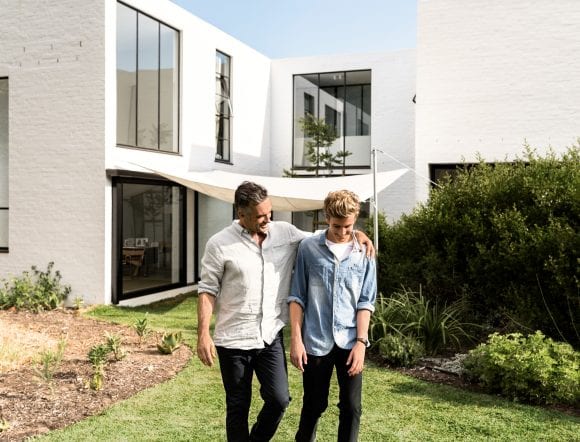We're here for you when you need us
Make an appointment for a non-binding consultation or call us directly if you have questions.
Mortgages in a nutshell
We explain everything you need to know and what to watch out for.
Content:

In most cases, your own funds will only cover part of the purchase price of your desired property. Most of the price will be financed with a mortgage, in other words, with a loan from a bank that is secured by the property. We explain how it all works and what else you need to know.
A mortgage is a long-term loan provided by a bank for the purchase of a property. The residential property or real estate serves as collateral for the bank. When taking out a mortgage, you usually have to finance at least 20 percent of the property value as determined by the bank with equity, i.e., your own funds.
Half of these funds must be “hard” equity. This refers to securities, account and savings balances, retirement savings or inheritances. The remainder, i.e., “soft” funds, can be withdrawals or pledges of money from your pension fund. Up to 80 percent of the property’s value can be covered by a mortgage. You can find out more about equity here.
An important concept in the context of mortgages is affordability.
Video guide
There are different types of mortgage. To finance your property without any worries, a combination of short- and long-term mortgages is ideal. The following options are available:
The term affordability refers to the relationship between the ongoing financial expenses of a property and the borrower’s income. During the affordability test, the lender, such as a bank, checks whether the financial requirements to cover the total cost of the home are met. The following applies: Your home’s total running costs must not exceed one third of your gross annual income. These costs are broken down as follows:
The special feature of the affordability calculation is that it is carried out on the basis of imputed interest costs and not current interest rates. The imputed interest rate, which is usually five percent, ensures that financing is possible even if interest rates go up.
First and second mortgage
When it comes to financing your own home, you’ll usually need to take out not just one mortgage but two. This is because only up to a maximum of 67 percent of the property value can be financed with the first mortgage. This mortgage does not have to be amortized, i.e., paid back. You can finance a further 13 percent of the real estate value with a second mortgage. This must be paid back within 15 years or before you reach the reference age for retirement, whichever comes sooner.

Find the right mortgage with the help of our experts
Individual offers, with credit decision within 48 hours on request
Mortgage interest is the cost of the loan you take out. This interest is an essential part of your financial obligations under a mortgage agreement. The amount of interest depends on the term, the type of mortgage and the current mortgage interest rate. The level of mortgage interest rates, in turn, depends on the market situation and is strongly influenced by factors such as inflation or key interest rate hikes by the Swiss National Bank (SNB).
As with other financing solutions, it is important to be well informed about your options and to study them all carefully. Feel free to contact your client advisor for further advice.
Make an appointment for a non-binding consultation or call us directly if you have questions.
Disclaimer
